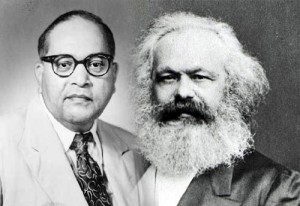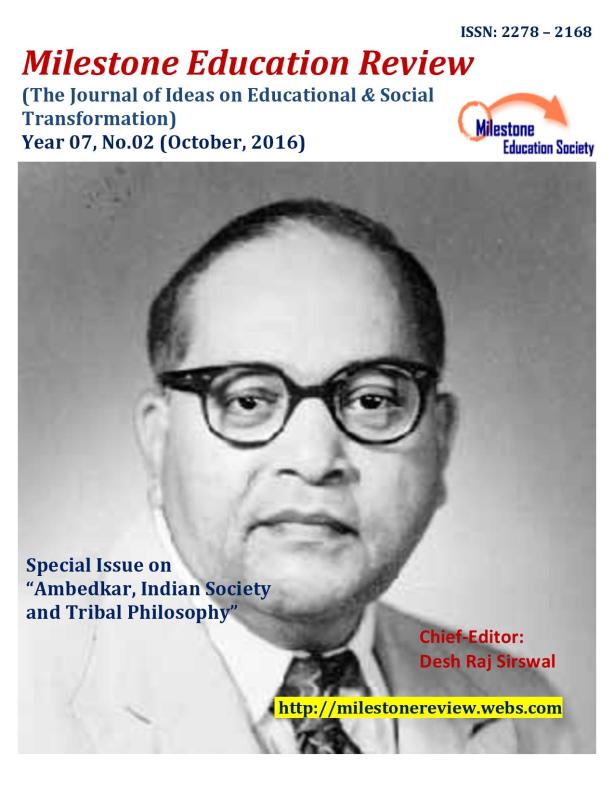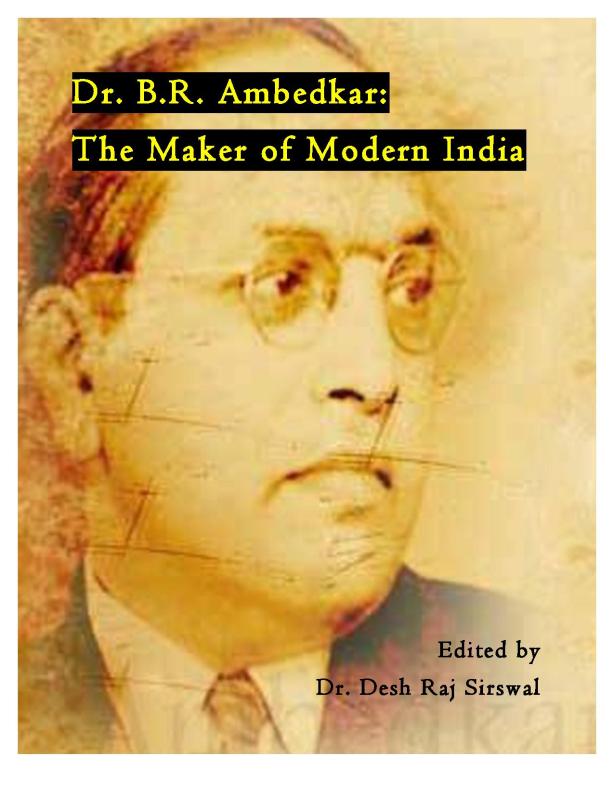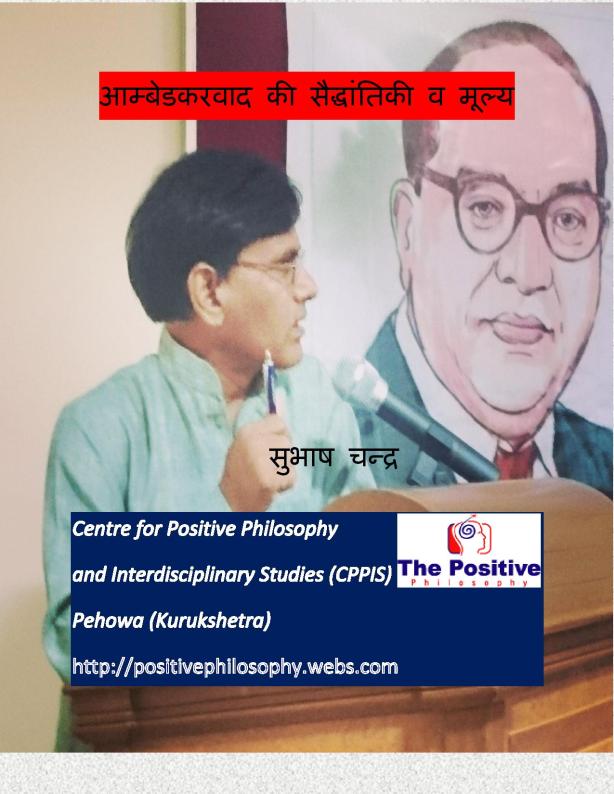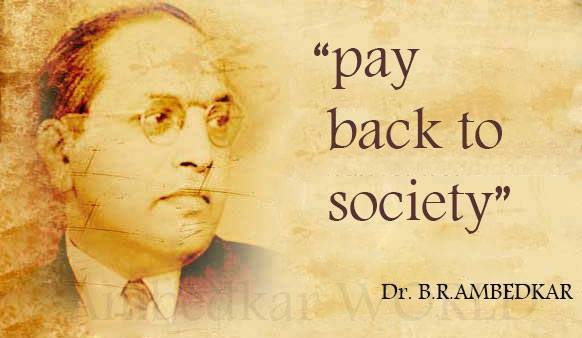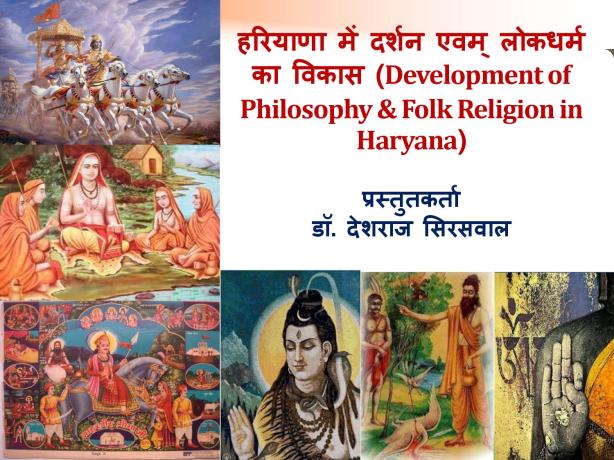
लोकधर्म से अभिप्राय है, “वास्तविक धर्म से भिन्न वे बातें या कृत्य जो जन-साधारण में प्राय धर्म के रूप में प्रचलित हों।जैसे—तंत्र-मंत्र भूत-प्रेत की पूजा- वीर पूजा आदि।” सबसे अचरज की बात है की यह हमें सिर्फ परम्परा में देखने को मिलते हैं इनका कोई लिखित इतिहास नहीं है हिंदी में लोक धर्म शब्द के अर्थ निम्नलिखित है:
पीढ़ी से पीढ़ी तक फैली मान्यताओं, अंधविश्वासों और सांस्कृतिक प्रथाओं के एक समूह का वर्णन करता है.
एक धर्म जो जातीय या क्षेत्रीय धार्मिक परंपराओं से बना है.
लोगों द्वारा बनाया एक धर्म. (The WiseDictionary)
हरियाणा क्षेत्र एवं उसके आसपास के राज्यों में निम्नलिखित लोकदेवताओं का हमें वर्णन मिलता है:
दादा नगर-खेडा (हर गाँव और शहर में)
गोगा-पीर (बागड़)
पाथरी वाली माता (पाथरी हरियाणा)
पाँच बावरी (सबल सिंह, केसरमल,नथ मल, हरी सिंह. जीत सिंह बावरी)
माता श्याम कौर इत्यादि.
अगर हम ऐतिहासिक और सामाजिक स्तर पर देखें तो ये लोकदेवता अपने समय के आदर्श पुरुष रहे होंगें और अपने क्रांतिकारी विचारों या कर्म की वजह से जनमानस के जीवन का हिस्सा बन गये. मेरा ऐसा मानना है कि वर्तमान समय में लोकधर्म और लोक-विश्वासों के ब्राह्मणीकरण और संस्कृतिकरण, हमें प्रत्यक्ष और अप्रत्यक्ष तौर पर मूलनिवासी, आर्य-अनार्य संघर्ष की छवि प्रदान करता है और वर्तमान में “नया इतिहास” लिखने और समझने की ओर ले जाता है. आस्तित्व के लिए संघर्ष विरोध के स्वर के रूप में मुखरित होकर हमारे सामने आ रहा है.
सांस्कृतिक गतिशीलता की इस प्रक्रिया का वर्णन करने के लिए श्रीनिवास ने प्रारम्भ में ‘ब्राह्मणीकरण’ (Brahminization) शब्द का प्रयोग किया. परन्तु बाद में उसकी जगह “संस्कृतिकरण शब्द का इस्तेमाल किया. (डाँ. जे. पी. सिंह (2016) आधुनिक भारत में सामाजिक परिवर्तन,) लेकिन यह शब्द आज भी हमारे सामाजिक और साहित्यिक क्षेत्र में प्रासंगिक होने के साथ साथ व्यवहार में भी है. सुरेंद्रपाल सिंह का लेख “लोक देवता गुग्गा पीर का बदलता स्वरूप” के निम्नलिखित अंश दृश्व्य हैं:
“राजस्थान, हरियाणा, पंजाब, हिमाचल प्रदेश, उत्तर प्रदेश और मध्य प्रदेश के कुछ इलाकों में गुग्गा पीर एक लोकप्रिय लोकदेवता है….उल्लेखनीय है कि अधिकतम गुग्गा मैडी की इमारतों के चारों कोनों पर एक एक मीनार बनी होती है जो मैडी को एक इस्लामिक स्टाइल का रूप देती हैं। मैडी के अंदर या तो मजार बनी होती है या घोड़े पर सवार हाथ में भाला उठाए हुए जाहर वीर गुग्गा की मूर्ति होती है।….
गुग्गा में आस्था रखने वाले हिन्दू भी हैं और मुसलमान भी। सभी जातियों के लोग गुग्गा पीर में आस्था रखते हुए दिखाई दे जाएंगे।……..अब उच्च जातियों के लिए लौकिक आवश्यकताओं की पूर्ति के लिए गुग्गा भी उनके अन्य देवी देवताओं के बीच एक स्थान ग्रहण कर चुका है जबकि अनेकों निम्नवर्ग के समुदायों के लिए गुग्गा आज भी उनका मुख्य इष्टदेवता है।
अब मुख्य गुग्गा मैडी में मेले के समय एक महीने के लिए ब्राह्मण पुजारी भी नियुक्त कर दिया गया जो चोहिल राजपूत मुसलमान द्वारा ख़ानदानी रूप से 12 महीनों के लिए उपस्थित होने के अलावा है। पूजा विधान का यथासंभव ब्राह्मणीकरण किए जाने का प्रयास किया जा रहा है। अब गुग्गा मैडियों में शिव, हनुमान, गणेश, कृष्ण आदि अन्य हिंदू देवताओं की मूर्तियाँ भी स्थापित की जाती है। पारम्परिक रूप से निम्न वर्ग के भगतों का स्थान ब्राह्मण पुजारियों द्वारा लिया जा रहा है। आरती, हवन, गणेश वंदना, संस्कृत श्लोकों के माध्यम से उच्च वर्ण के यजमान अपना स्थान बना रहे हैं। ऐसे दृष्टांत भी देखने में आते हैं कि यजमान अपने ब्राह्मण पुरोहित को मेले में अपने साथ ले जाते हैं जो मेला प्रांगण में ही ब्राह्मण हवन कर लेते हैं।
पुराने साधारण थान की जगह अब गुग्गा पीर की मूर्तियाँ घोड़े पर सवार, हाथ में भाला उठाए हुए बहादुर राजपूत के रूप में आम हो गई है। थान एक छोटा चबूतरा या घर में आले की जगह होती है जिस पर सांप की आकृति छाप दी जाती है या मिट्टी से बने घोड़े रखके पूजा की जाती है।
गुग्गा के कलेंडर और चित्र भी राजपूत योद्धा के रूप में छापे जाते हैं । इसके अलावा गोगा पुराण, गोगा चालीसा, गोगा आरती आदि पुस्तिकाएँ थोक में बेची या बाँटी जाती हैं। इन सबमें गुग्गा को गुग्गा पीर की बजाय गुग्गा वीर लिखा जाता है। एक जन नायक का जन्म और उसकी बहिष्कृत और अछूत समाज के लोक देवता के रूप में पीर से वीर की हैसियत में एक छोटे हिंदू देवता की तस्वीर हमारे सामने है।”
कुछ अन्य उदाहरण
चंद्रभूषण सिंह यादव, कृष्ण और यादवों का ब्राह्मणीकरण-Posted on August 7, 2014
कृष्ण और यादवों का ब्राह्मणीकरण
बाल्मीकि प्रसंग : जरूरत परंपरा-प्रक्षालन की है- ओमप्रकाश कश्यप, आखरमाला, सितम्बर 28, 2015.
बाल्मीकि प्रसंग : जरूरत परंपरा-प्रक्षालन की है
इतिहास को जानबूझ कर नजरअंदाज किया जा रहा है : सबरीमाला और आदिवासी देवता का ब्राह्मणीकरण-AATHIRA KONIKKARA, The Caravan, ०३ नवम्बर २०१८ Link: https://caravanmagazine.in/religion/pk-sajeev-sabarimala-mala-araya-brahminisation-adivasi-deity-hindi
References:
“लोक-धर्म”, शब्द का अर्थ, भारतीय साहित्य ग्रन्थ, 10-12-2018: https://www.pustak.org/index.php/dictionary/word_meaning/लोक-धर्म
The WiseDictionary, 11-12-2018, https://www.thewisedictionary.com/hindi/लोक-धर्म
डाँ. जे. पी. सिंह (2016), आधुनिक भारत में सामाजिक परिवर्तन https://books.google.co.in/books?isbn=8120352327
सुरेंद्रपाल सिंह, (2018), “लोक देवता गुग्गा पीर का बदलता स्वरूप”, देसहरियाणा, December 10, 2018
https://desharyana.in/2018/12/10/सुरेंद्रपाल-सिंह-लोक-देव/?fbclid=IwAR2idha2F0gvUAAcbA3PQJ9us3h7lIfQz511tjAYcVfme4b_6mfM5H49tpo
Note: This short article is a part of my presentation “Development of Philosophy and Religion in Haryana”. You can visit the complete presentation on the given below link:



